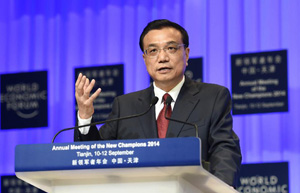"Big countries like the United States have huge home markets so they can develop innovation for the domestic market before taking it to the world," says INSEAD's Lanvin.
"For smaller countries, they can't do that. They need to design innovation the world wants they don't have the luxury of testing the home market first," he adds.
Innovation takes on many forms in Asia, says Arcot Desai Narasimhalu, director of the Institute of Innovation and Entrepreneurship at Singapore Management University.
"If you take India, its innovation focus is on the rural sector," Narasimhalu tells says. It is a very different approach from China, which creates products for a global market."
Asia's rising success as a center of innovation has been a product of necessity rather than design, he says.
"Singapore knew it could not survive purely as a manufacturing center. It had to innovate and move to the next level and become a knowledge-based economy. This was a conscious government decision which had the support of business and indeed the workers."
South Korea "rose from the ashes of war" to become one of the world's major trading nations, Narasimhalu adds, citing how brand names like Samsung, LG Electronics and Hyundai are known all over the world.
"Again, successive South Korean governments placed the emphasis on education and supporting home-grown industries and encouraging innovation."
WIPO says if the level of innovation is measured by the numbers of patents filed at the world's top patent offices, then data shows that the geography of innovation has shifted to Asia.
Collectively, patents filed in China, Japan and South Korea in 2012 amounted to 50.4 percent of the global total. In comparison, the shares of the US and the European Patent Office were 23.1 percent and 6.3 percent of the global total, respectively.
"Even though caution is required in directly comparing IP (intellectual property) filing figures across countries, these trends nevertheless reflect how the geography of innovation has shifted," says Francis Gurry, director-general of WIPO, in the World Intellectual Property Indicators 2012 report.
Of the 100 names ranked in Forbes' recent World's Most Innovative Companies list, one quarter were from Asia.
The magazine has forecast China, India, Indonesia, Thailand and the Philippines to have a combined consumer market size of $8,300 billion by 2020.
"The rise of innovation in Asia is not a win-lose game," Steinbock said. "It will support prosperity and growth in the region, while providing opportunities to advanced economies to participate in both."
|
 |
 |
| Top 10 creative figures in China | Sci-Tech, innovation to play crucial roles in China's long-term growth |
